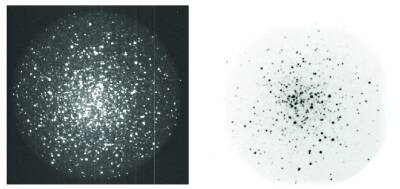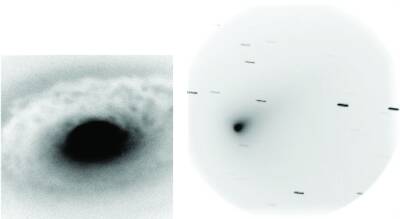 | |||
|
| Home > Public Information > ING Newsletter > No. 8, September 2004 > WHT Auto-guider/TV Upgrades |
|
|
SCIENCE |
|
|
|
Previous: SuperWASP: The Trials and Tribulations of a Remote Inauguration Ceremony | Up: Table of Contents | Next: ING Papers for SPIE’s Astronomical Telescopes & Instrumentation Conference
Article mirrored at: La Palma server | Cambridge server
Other available formats: PDF
Simon Tulloch (ING)
During the last year the ageing RGO auto-guider heads have been gradually phased out and replaced with new higher performance cameras. These new cameras use ex-science camera SDSUII controllers freed up in the wake of restructuring and the same data acquisition system (UltraDAS) used by the science cameras. This gives considerable advantages with regard to spares and maintainability.
The new heads can be loaded with two kinds of detector which are pin-compatible, differing only in their number of pixels. The small format heads contain a CCD5710 which has an image area of 512×512×13 μm pixels. The larger format heads use a CCD4720 with an image area of 1024×1024×13 μm pixels. The CCDs were supplied in hermetically sealed packages with integral Peltier coolers which should improve reliability (the previous heads required a continuous dry nitrogen flush to prevent condensation forming on the detector). The Peltier cooling reduces detector dark current to well below 1e– per second. Heat from the Peltier device is dissipated in a finned heat sink that is force cooled by two small fans located within the head. The CCDs are mounted onto a small circuit board that provides pre-amplification of the video signal as well as static protection. Even when connected to their controllers through a 2.5 m cable, a read noise of 4–5e– is obtained, similar to the level of the science cameras. The detectors are thinned backside-illuminated with mid-band AR coatings that give QEs of >90% at 600 nm.

|
| Figure 1. Left: the Auto-guider/TV hardware: Head, Controller and PSU rack. Middle: small format detector mounted on its PCB. Right: the complete Auto-guider/TV head. [ JPEG | TIFF ] |
These in-house designed cameras will eventually replace the Cryocam TV systems also. As they use Frame Transfer CCDs they will be more reliable than the mechanically shuttered Cryocams. Their smaller format, however, means that a focal reducer must be used to obtain the same field of view and allow them to view the entire ISIS slit. A replacement for the TV scale 12 slit viewing optics barrel is currently under construction and should be delivered in September 2004. Once installed at this station the new TV camera will also be capable of slit-guiding. Its images can also be archived in Fits format with full headers to accompany the spectroscopic images obtained with ISIS.

|
| Figure 2. Left: M13, NAOMI TV. Right: M72, NAOMI TV. [ JPEG | TIFF ] |

|
| Figure 3. Left: NGC4826, CASS Auto-guider. Right: Comet C/2001 Q4 (NEAT), CASS TV (prototype optics). [ JPEG | TIFF ] |
Five cameras are now currently in use at the following WHT stations: CASS Auto-guider, PFIP Auto-guider, AF2 TV, INTEGRAL Auto-guider, NAOMI Acquisition TV, NAOMI Simplexing Camera. Stations still to be filled are: CASS TV (awaiting new optics) and Integral TV (awaiting new head). Two more heads will be built; we already have the detector for the first of these.
The cameras are controlled primarily through dedicated GUIs where the auto-guiding
and TV operations can be controlled by the click of a mouse. Alternatively
the user can use the standard uDAS syntax to set up windows and do runs in
the normal way. Below is a selection of images obtained using these cameras
during the commissioning phase. ¤
*Email contact: Simon Tulloch (smt@ing.iac.es)
| Top | Back |
|

